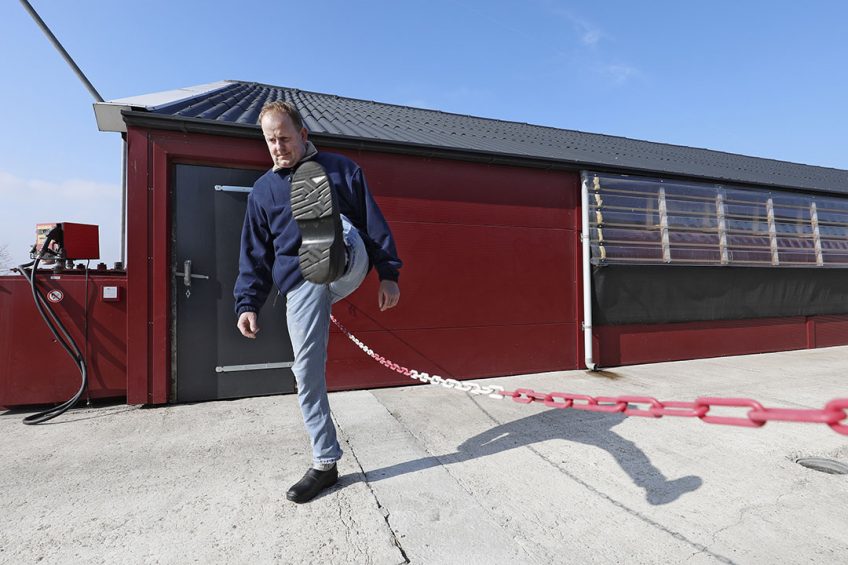Avoidance of complacency

Poultry farmers setting up a biosecurity contingency plan on their holding should look at the holding from the outside in, taking into account the UK’s Animal and Plant Health Agency’s “higher risk areas”.
Speaking at the South West Chicken Association conference, Livetec technical director Julian Sparrey said farmers should look to divide their holding into a live bird area, ancillary area and the rest of the farm, ensuring that the ancillary area is kept clean and has control points. Ringfencing of the actual poultry unit from any other operation is important because if a farm goes down with avian influenza any movement must take place under a specific licence from government inspectors.
Biosecurity plan
Mr Sparrey said having a plan would make working with the health agency easier, will speed up the cleansing and disinfection time in the event of an outbreak and would reduce costs and stress. He said the biosecurity plan should cover, among other issues location risk, shed control and perimeter security, which at times could often be lax. Entrance to the holding, security gates, fences and hedges and signs clearly instructing people of the presence of stock should all be taken into account. “You need to stop non priority deliveries and casual visitors coming here,” he said.
Vehicle traffic to be kept at minimum
Within the ancillary area, Mr Sparrey said vehicles should be kept to a minimum too – just feed lorry’s and bird transporters. Current information from the Red Tractor Assurance scheme suggests parking outside the ancillary area. Sheds to change boots and sign in are also beneficial. And he added that if feed vehicles were dirty when they approached the farm, farmers had the right to turn them away.
Control points on poultry farms were often rather haphazard with random barrier systems in operation on some holdings but not on others. Boots had to be clean when going into poultry sheds and foot dips with lids needed to effective. While the UK has not had a bird flu outbreak since May 2017 when seven farms were affected, the situation elsewhere was of concern. There have been a growing number of outbreaks of the low pathogenic avian flu virus H3N1, which has spread rapidly across the poultry sector in Belgium. Dozens of farms, mainly in West Flanders, have been infected with mild to moderate symptoms reported to veterinary authorities. Federal Minister for Agriculture Denis Ducarme emphasised that the virus was harmless to human health, adding that its low pathogenicity was such that it was not on the list of regulated and notifiable diseases.
Biosecurity precautions
Birds infected or showing symptoms of the virus have been slaughtered and manure from affected farms is being sent to a manure processor to be either burned or composted. The Farmers Association in Belgium reports that in farms with different houses, the infection has spread to other houses, despite strict biosecurity precautions put in place. Although it has come to an agreement with the Belgium authorities on a coordinated control programme, this has not won backing from the European Commission. The Commission has been arguing that as the low pathogenic strain is not on the OIE or notifiable animal disease list, compensation from the Sanitary fund would be seen as state support and would need to be paid back at a later stage. In the meantime, the lack of coordinated action means the virus is likely to keep on spreading.













